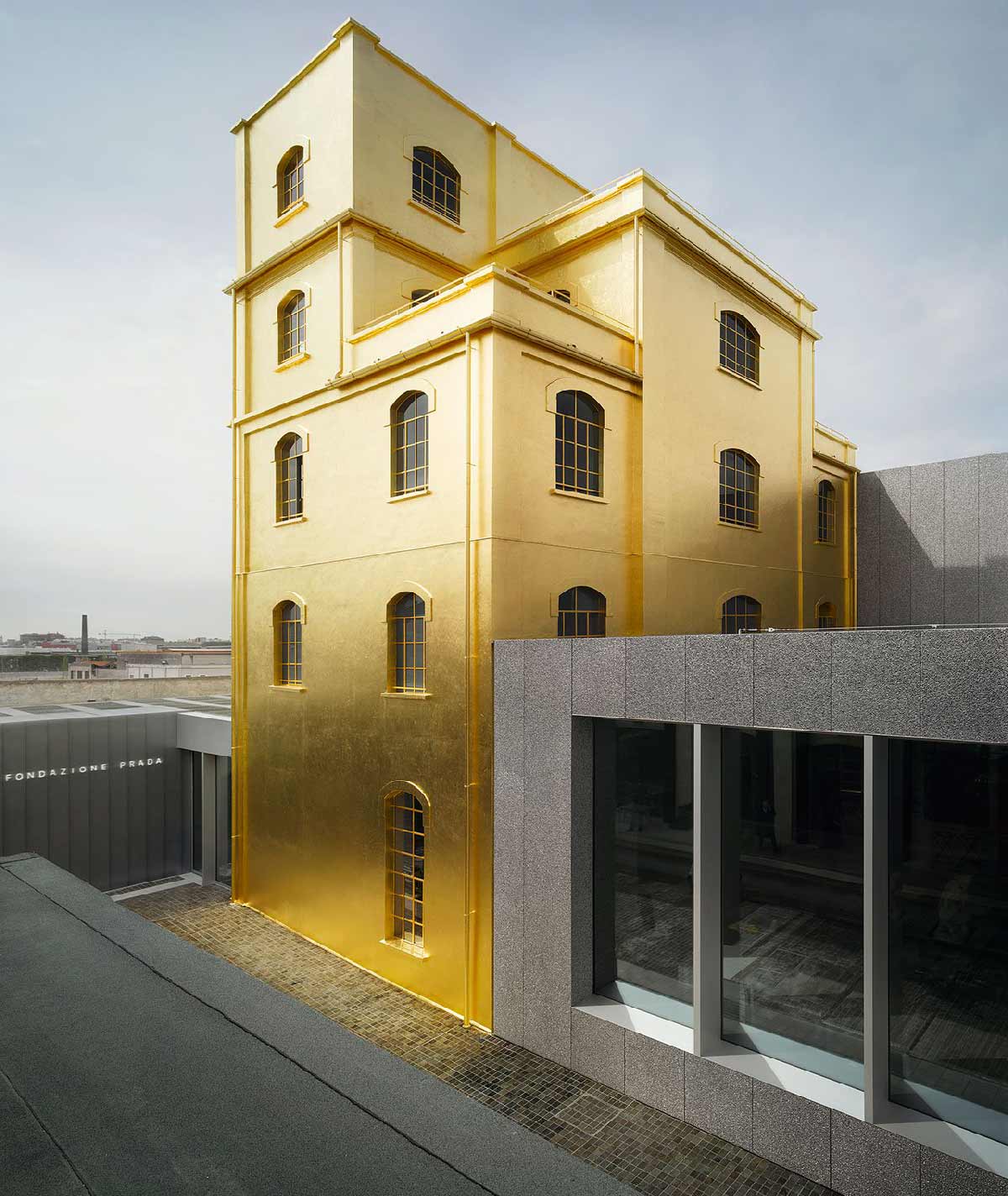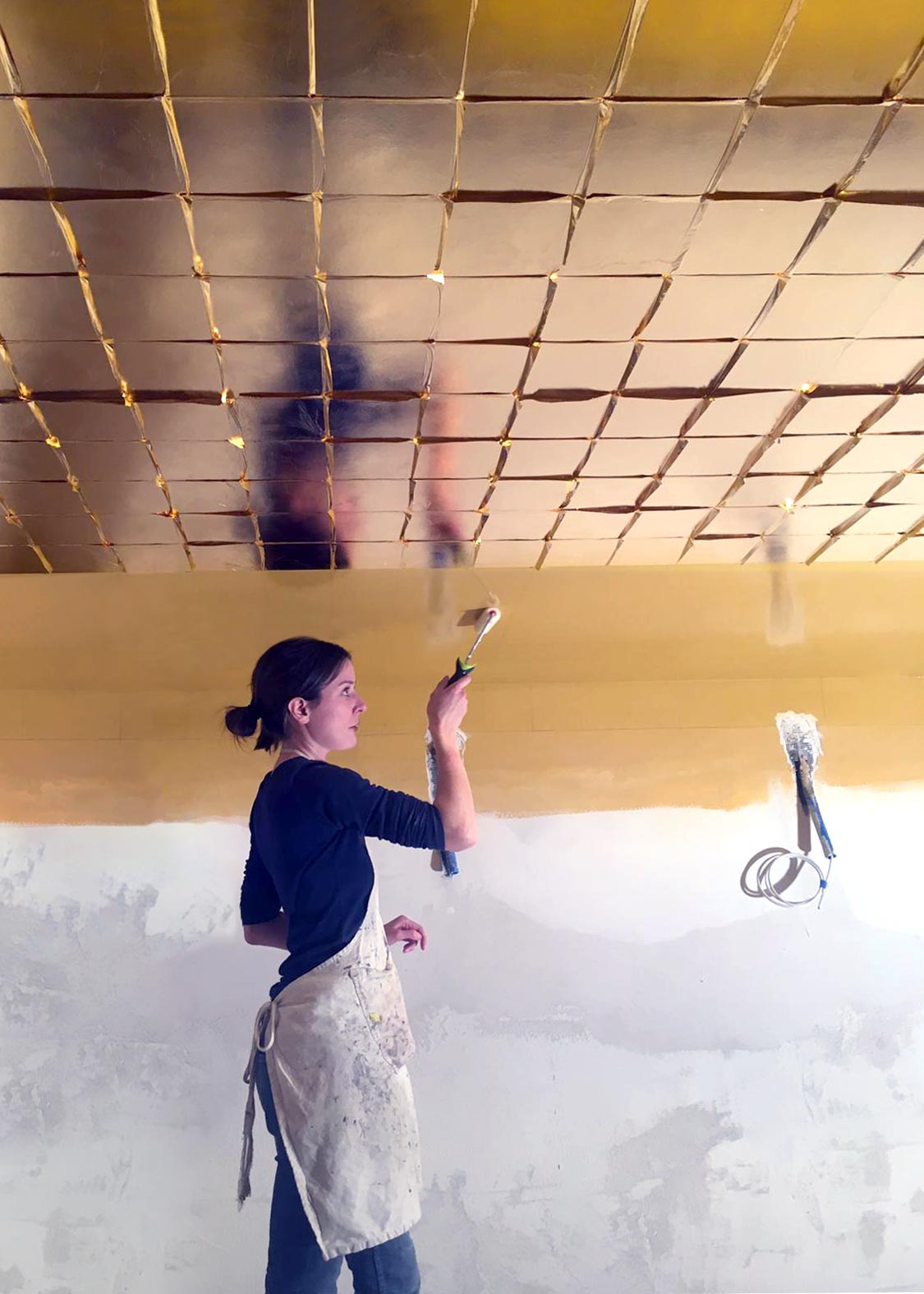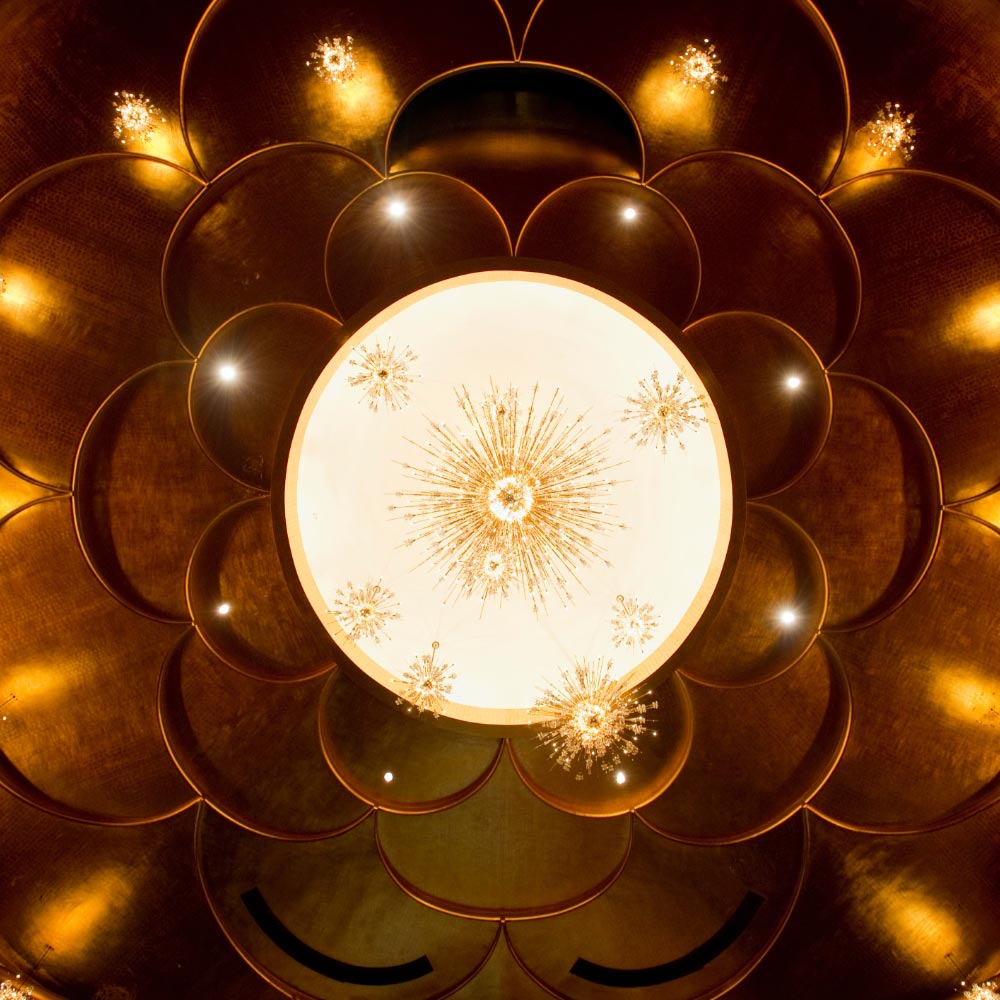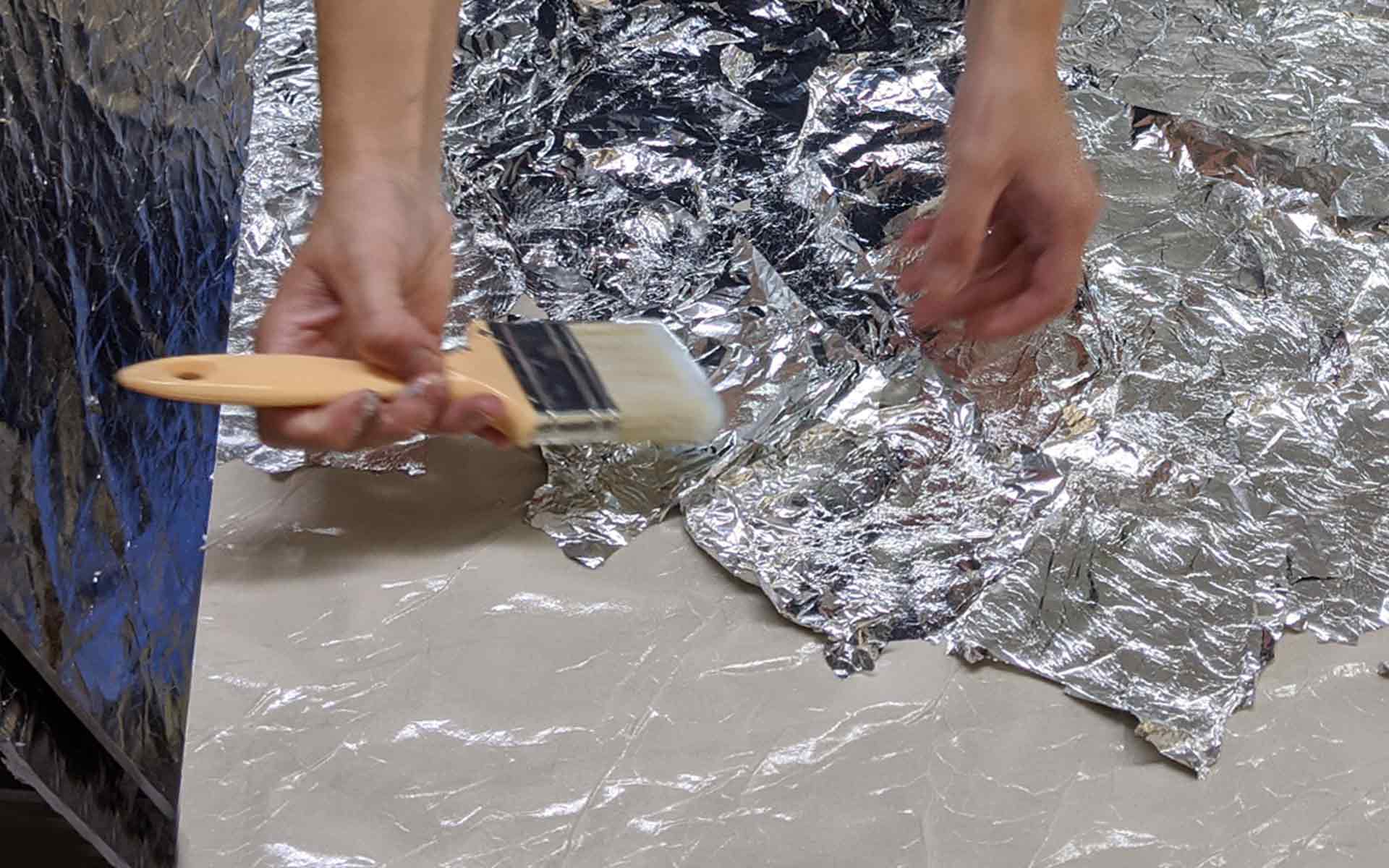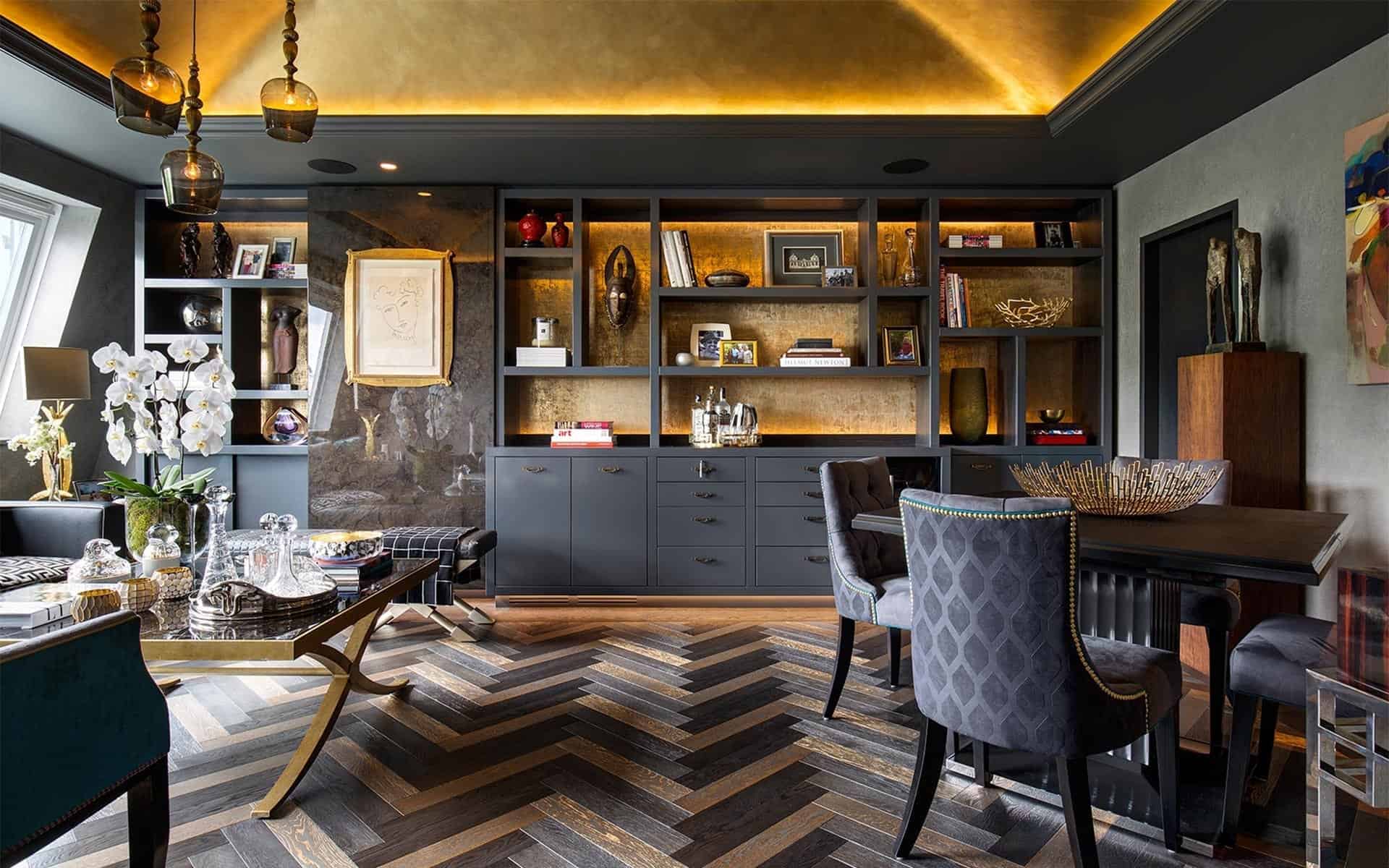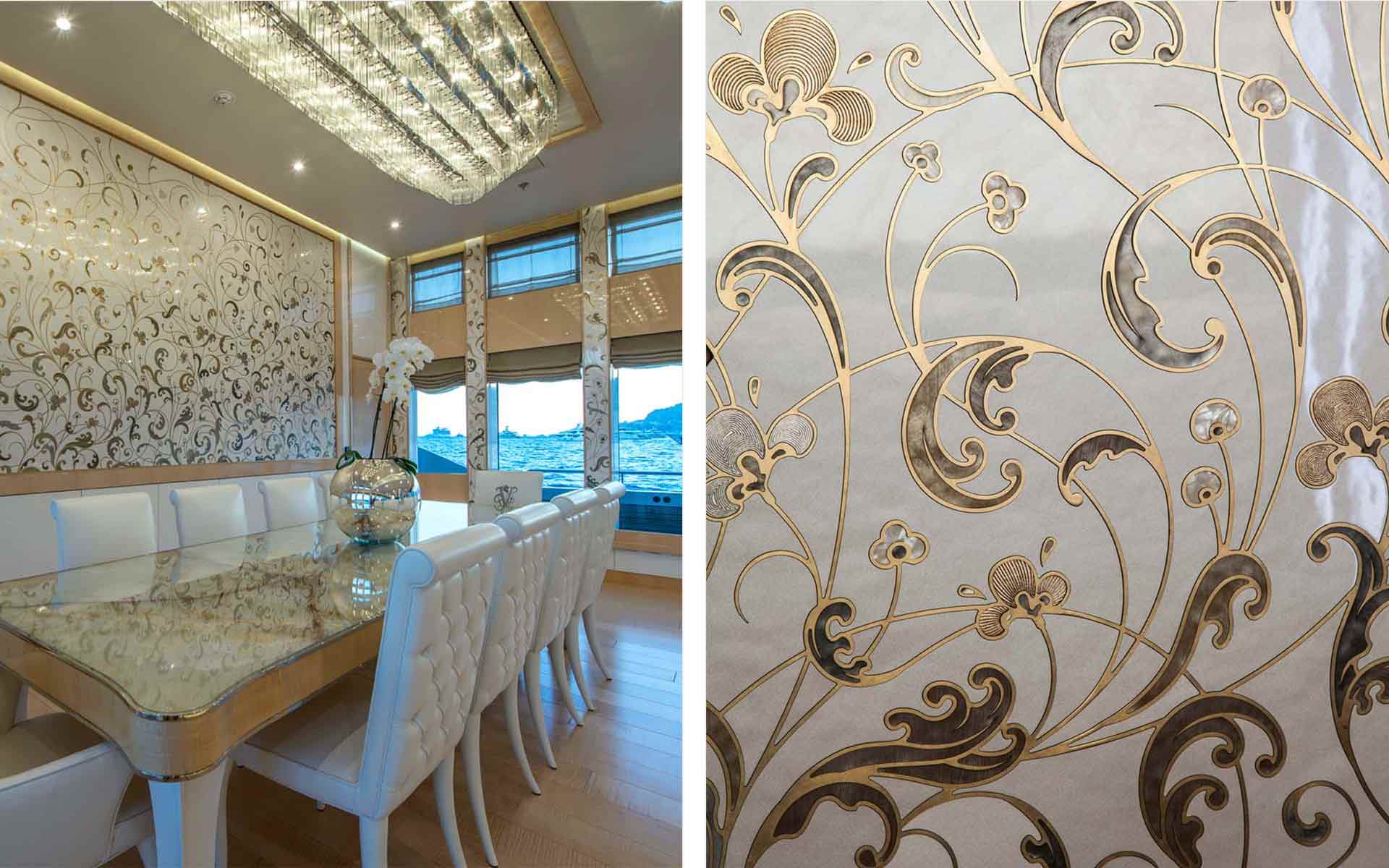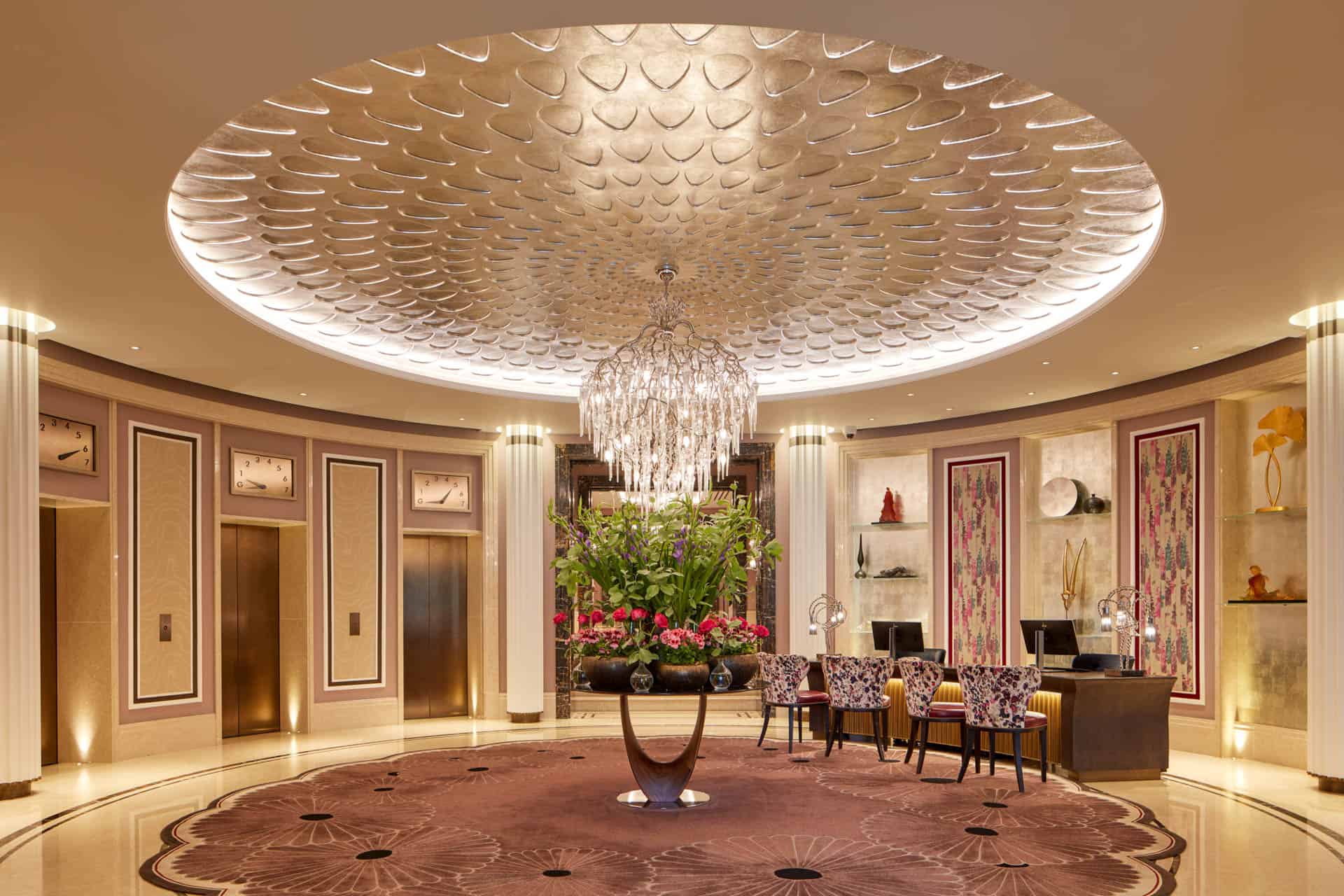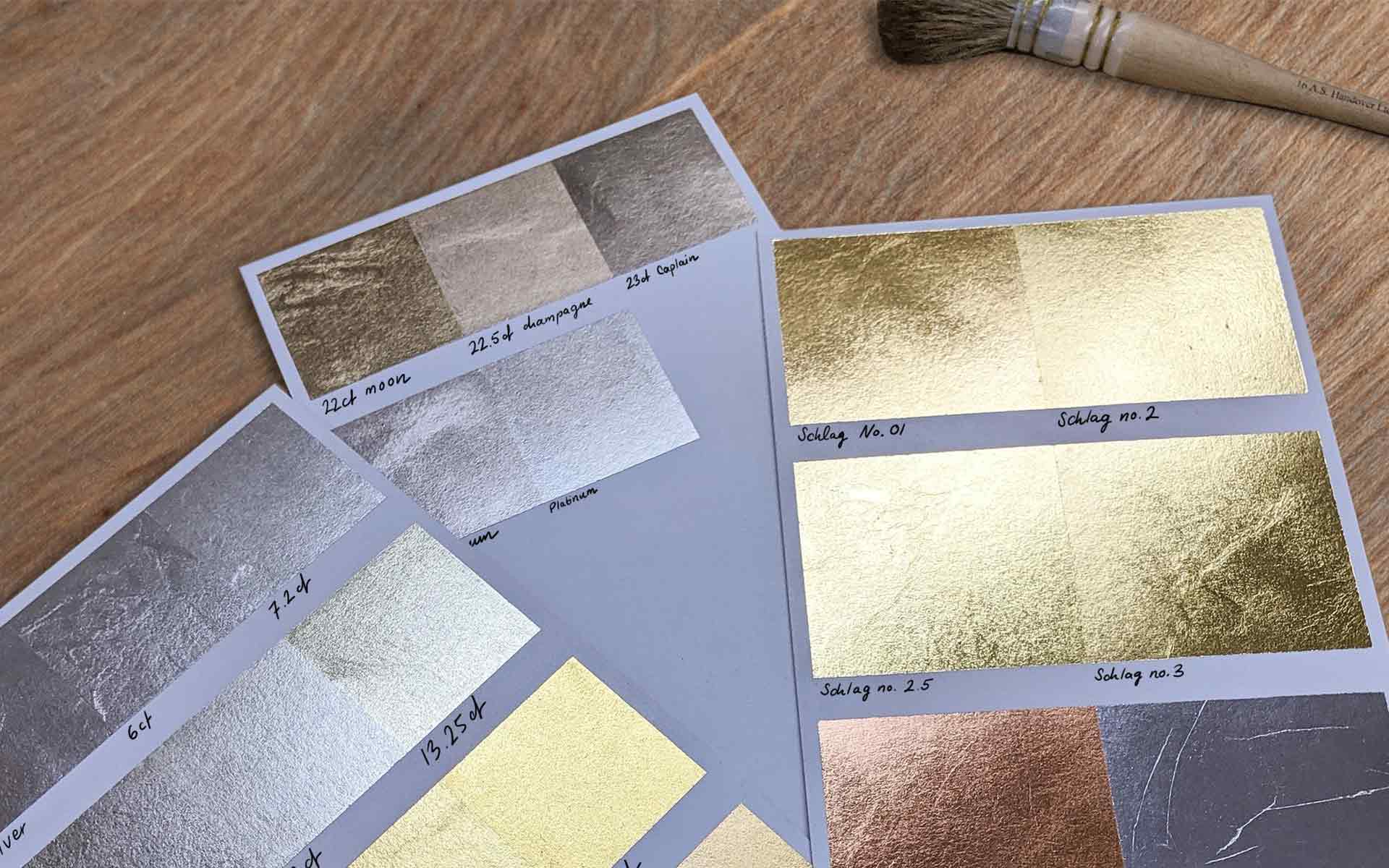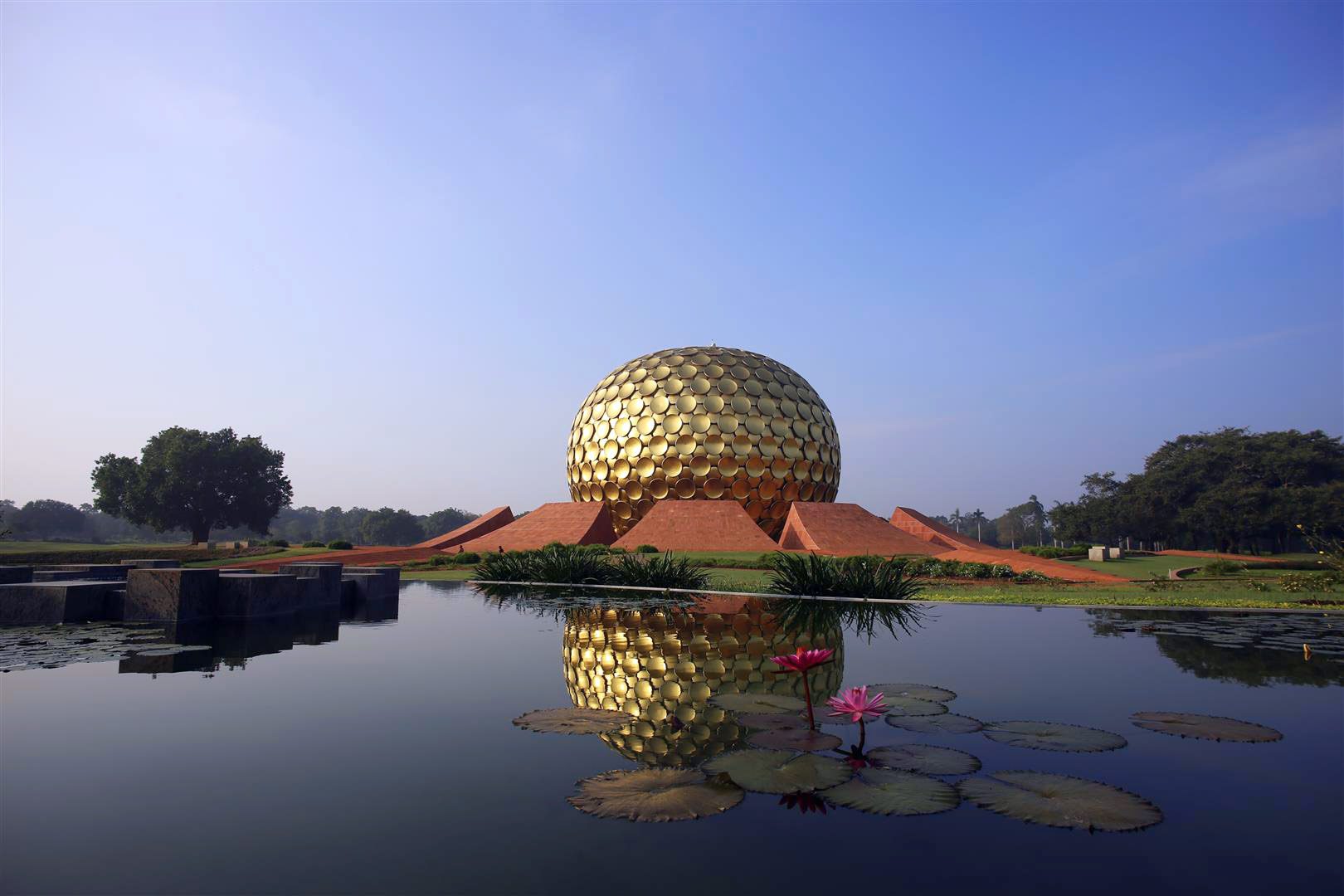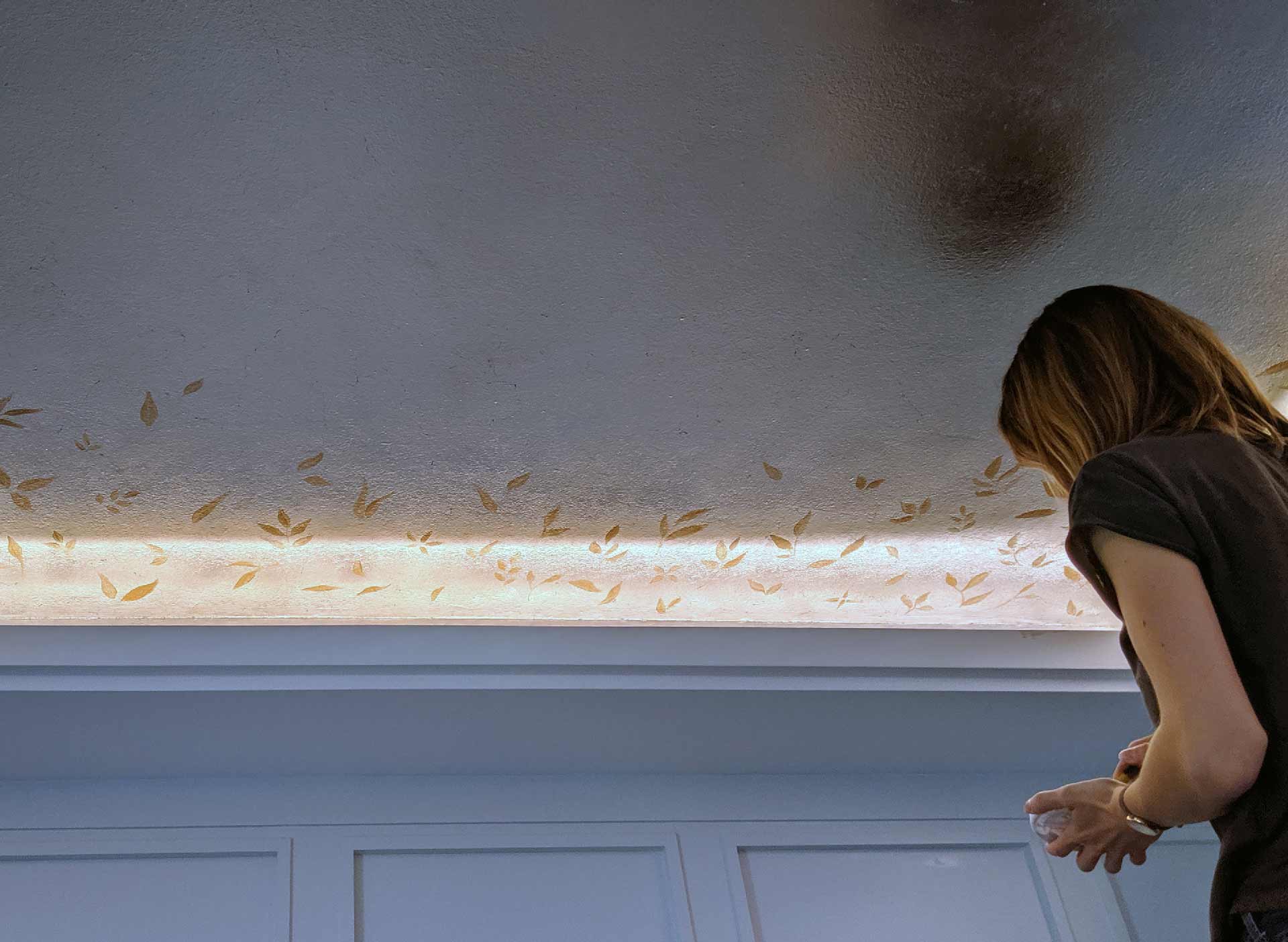Gold has been used in design throughout history, synonymous with ideas of opulence, luxury and even divinity. It decorated churches and artworks throughout the Byzantine era, was used to identify sacred figures within paintings, and was referred to as “the skin of the gods” by Ancient Egyptians, who used it to adorn the rooms of pharaohs. And nowadays? Gold leaf is still seen as a treasured addition to interior spaces – but it’s no longer reserved for kings and deities. Here, we take a look at the modern uses of this luxurious craft.
What is the difference between gilding and gold leaf?
Although the terms ‘gold leaf’ and ‘gilding’ are closely related, they have distinct meanings. Gold leaf refers to the thin sheets of gold that are created through the process of ‘goldbeating’, where gold is hammered into delicate layers that do not break. Gilding, on the other hand, involves the application of gold leaf or other gold-like materials onto different surfaces. In summary, gold leaf is the actual material, while gilding is the process of applying that material to achieve a decorative effect.
Discover the variety of gold leaf
Gold leaf, like jewellery, is available in various karat weights, ranging from 6-karat to 24-karat, with 24-karat being the highest and purest form. At DKT Artworks, we specialize in working with gold and silver, offering a wide range of colours such as champagne, moon, and white gold. We also provide exclusive options like palladium and platinum. For more cost-effective alternatives, we offer non-precious options like Dutch Metal (Brass) and aluminium, which mimic the appearance of gold and silver. Our assortment of leaves varies in opacity, transparency, patination, and distressing, providing a diverse array of textures, depths, and tones.
Gilding methods and applications
This gilding technique is versatile and can be applied to a wide range of items, including mirrors, resin tiles, and decorative stucco. It can be used both indoors and outdoors for various decorative purposes. Gilding encompasses two primary forms: water gilding and oil and acrylic gilding. Here we explore the distinctions between these methods and their suitability for your interior design projects.
Oil Gilding Technique
Oil or acrylic-based gilding uses an adhesive called a ‘size’ to adhere the leaf to the surface. This technique produces a softer, more matte finish, and is the only type of gilding that can withstand a moist atmosphere, making it a great option for outdoor decor or signage. Unlike imitation leaf, real gold leaf won’t tarnish and can last outside for decades.
Water Gilding Technique
A traditional method that has remained unchanged for literally hundreds of years, water gilding involves flooding a perfectly smooth surface with a gelatine solution and carefully applying the gold leaf on top, which is pulled taut as it dries and then polished to a high shine. Requiring both precision and patience with little to no room for error, water gilding is one of the most difficult ways to work with metal leaf. These days, it’s often used to adorn furniture, but water gilding can also be applied to picture frames and mirrors for a luxurious, vintage-inspired aesthetic.
Glass Gilding Technique
The water-gilding technique is also utilized on glass for creating Verre Églomisé artworks, reverse gilding on glass, and hand-gilded antique mirrors. This technique can also be applied over stucco surfaces. The process involves using a gelatine adhesive dissolved in water, which is then floated over the glass or stucco. The gold is promptly applied to the wet surface, creating a beautiful gilded effect.
Beautiful examples to inspire your next project
As a specialised decorative artist studio, we take pride in our expertise in gilding and gold leaf. Our portfolio showcases a diverse range of projects, including exquisite decorative work for luxury interiors and samples meticulously crafted by our skilled gilding team. Here, we invite you to explore a selection of our works, providing a glimpse into our craftsmanship and creativity.
Designed by London-based luxury interior design company René Dekker, this private residential space is finished with a glimmering, gilded ceiling, created by us for a modern, minimalist take on the traditional method.
Created for a private motor yacht, this gilded floral fretwork was designed by Italian graphic designer Nuvolari Lenard and handmade by us.
Found in the lobby of a luxury 5-star hotel located on London’s Grosvenor Square, this intricate aluminium-leaf ceiling was created onsite by our experienced gilding team.
Gold leaf FAQs
Why is it called gold leaf?
Gold leaf is made from gold that’s beaten into extremely thin sheets, which usually measure no more than a strand of hair – or a leaf, as it happens. Hence the name.
How is gold leaf created?
Gold is melted at temperatures of over 1000 degrees Celsius, creating an alloy that’s then poured into moulds. Once set, these sheets are repeatedly hammered – a process called ‘goldbeating’ to create extremely thin sheets – so thin, in fact, that it’s often possible to see straight through them if held to the light.
How is gold leaf applied?
Gold leaf can be applied using one of two methods: a water-gilding technique, or an oil or acrylic-gilding technique. While oil gilding produces a softer, more matte finish that can withstand a moist atmosphere, water gilding is a traditional method that has remained unchanged for centuries; the latter is one of the most difficult ways to work with gold leaf.
Is gold leaf 100% gold?
Gold leaf comes in various karat weights, ranging from 6 to 24 karats. The purest form of gold leaf is 24-karat, crafted from 100% gold. However, lower karat weightings often incorporate bronze or silver, leading to subtle colour variations in the final product.
How to choose the right gold leaf?
With so many variations in colour and karat weighting to choose from, finding the right gold leaf for your space depends on several factors, including the design, colour scheme, setting and budget.
How long can gold leaf last in interior applications?
Pure gold leaf (24k) is renowned for its durability and can withstand the test of time. However, even lower karat weightings are highly durable and can last for decades in indoor applications. To preserve even the lowest karat finishes, it is essential to apply a suitable protective coating. By adding an antioxidant seal you can ensure that effects such as patination will remain as intended and be just as durable as higher karat options in interior application.
How long does gold leaf last when used externally?
When used externally, pure gold leaf demonstrates remarkable durability and can endure for decades. Unlike lower karat leaf, it does not tarnish and thus does not necessitate a protective coating, in fact it’s best to avoid as it will bond to the gold and damage it when the seal breaks down due to the elements.
If you’re curious about incorporating gold leaf into your own design concept, contact us to discuss your project. We will gladly explore the best options to complement your space and vision.
